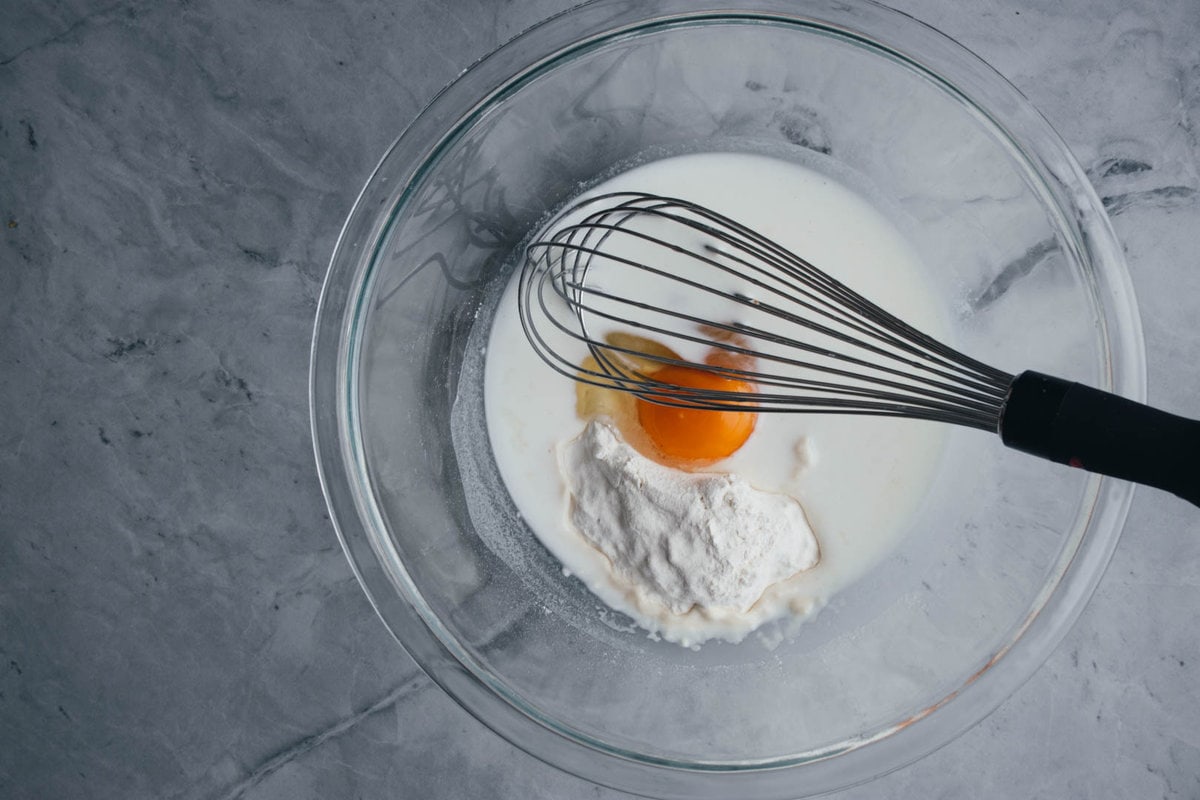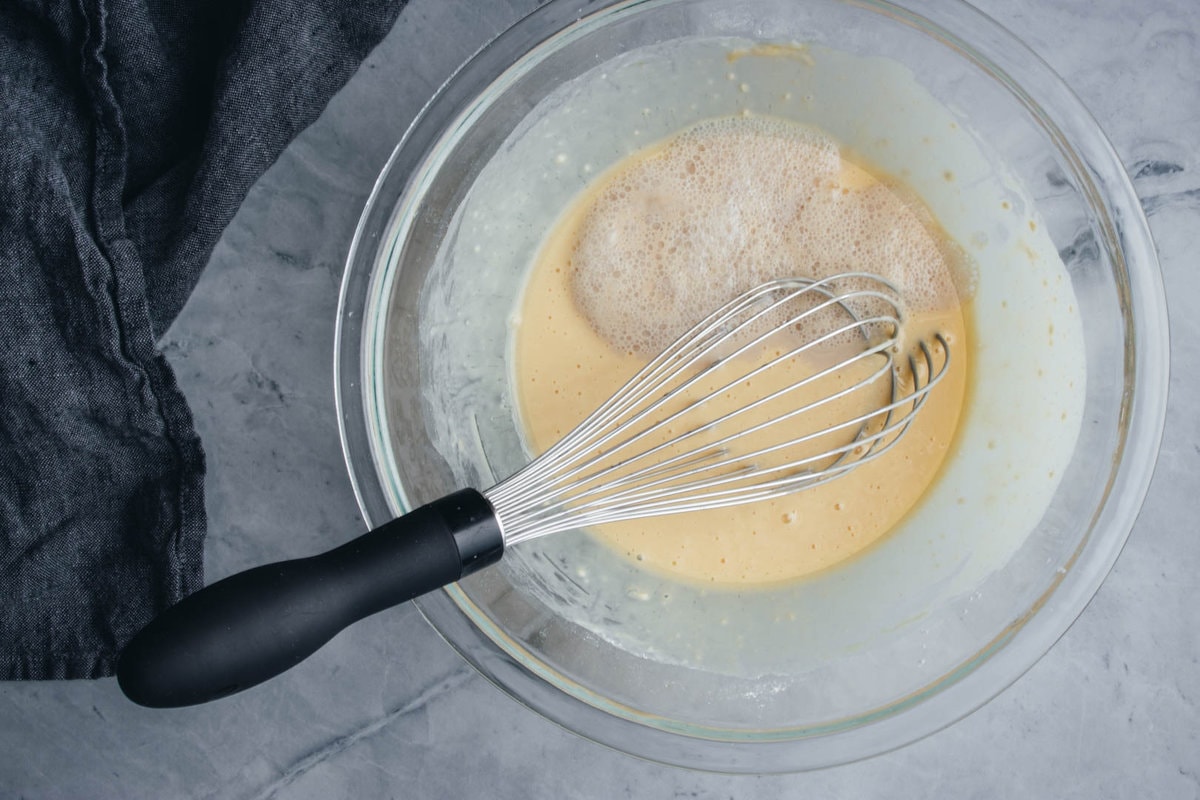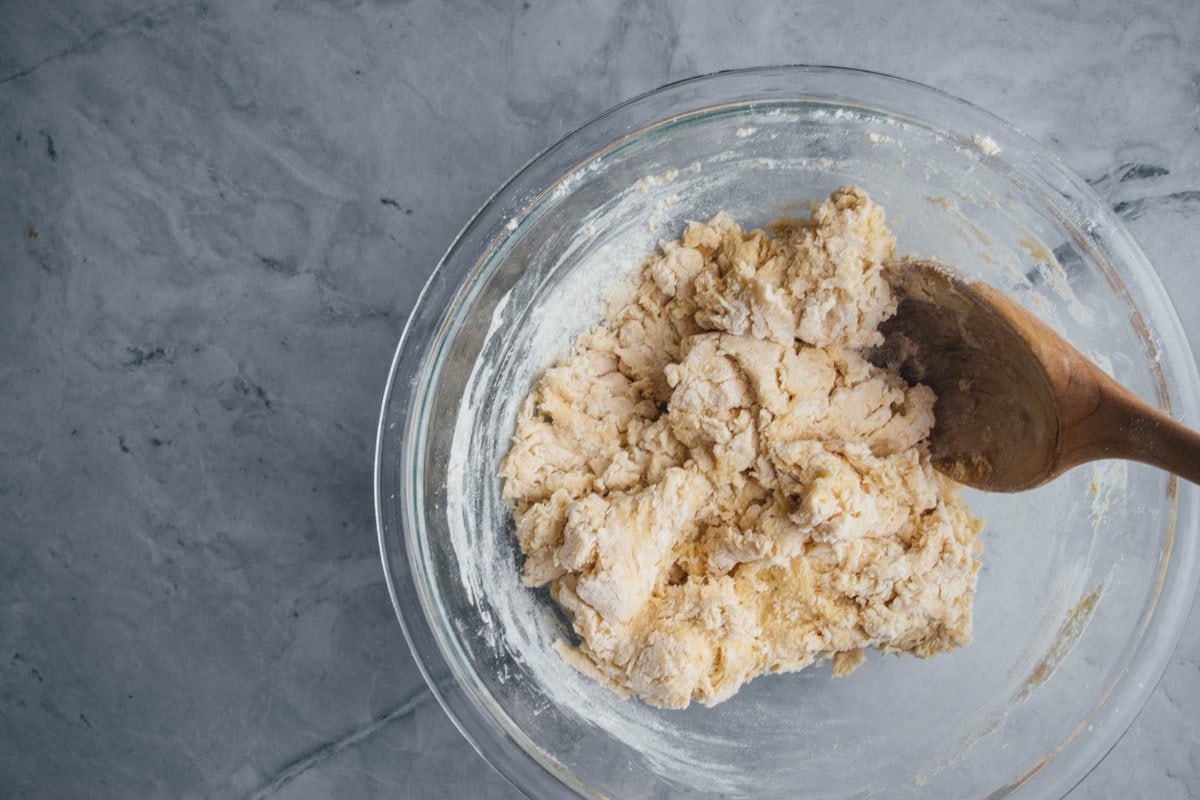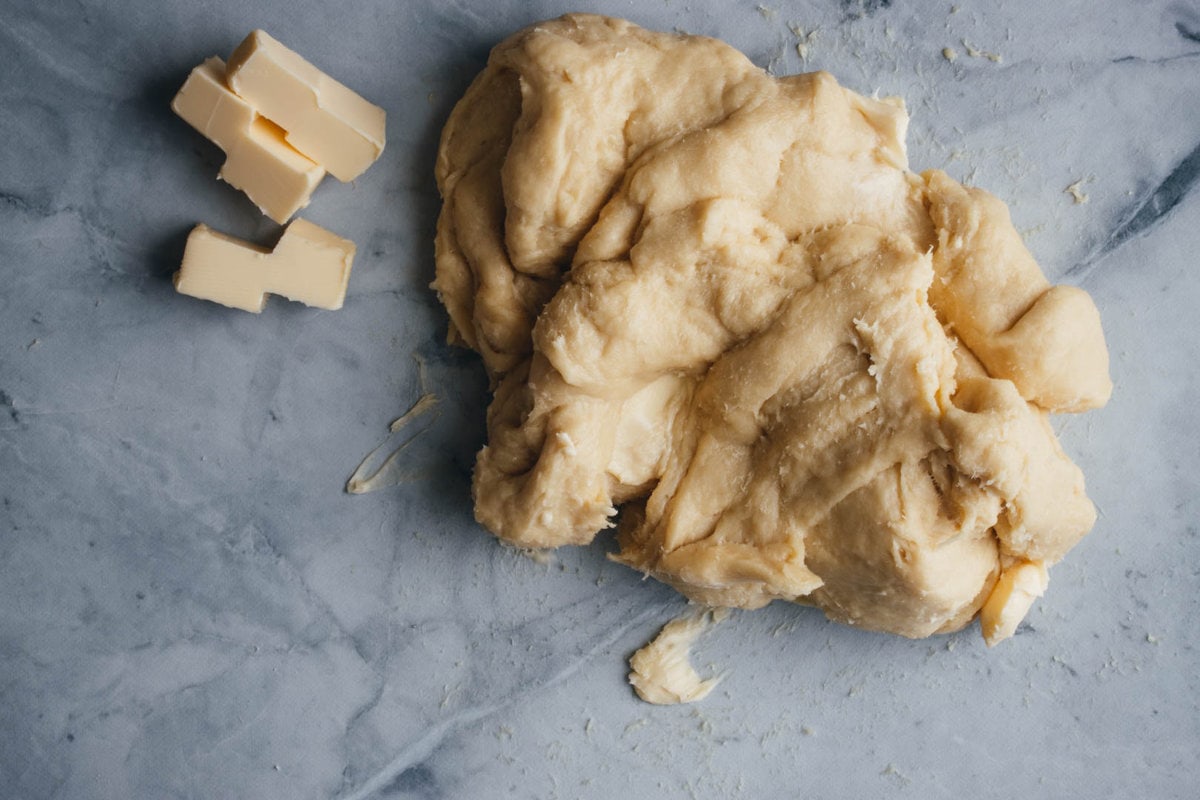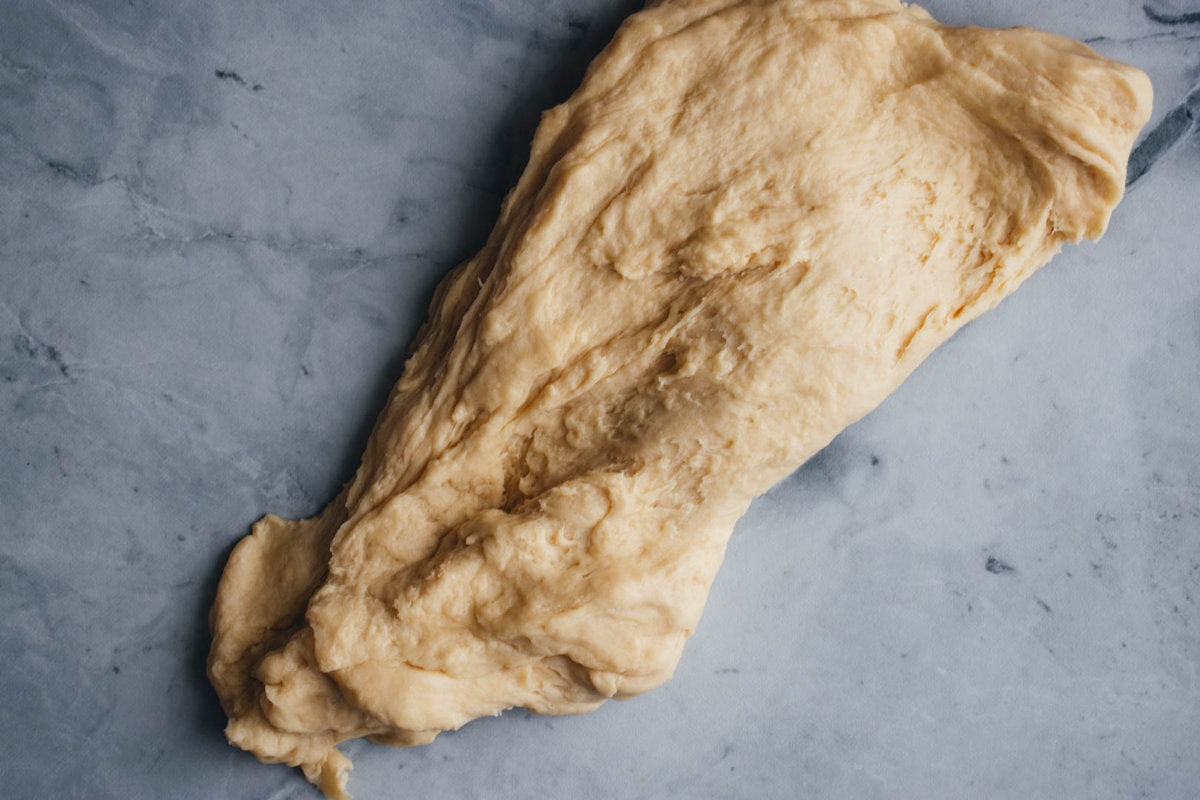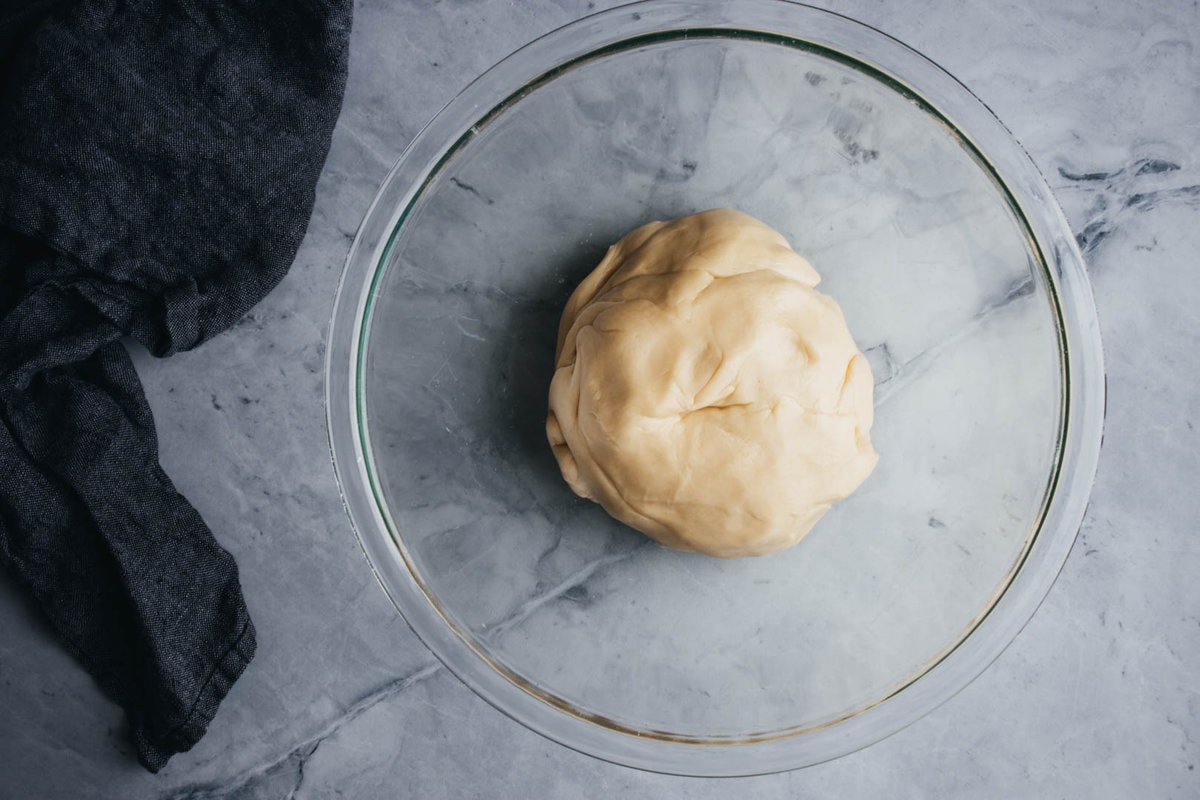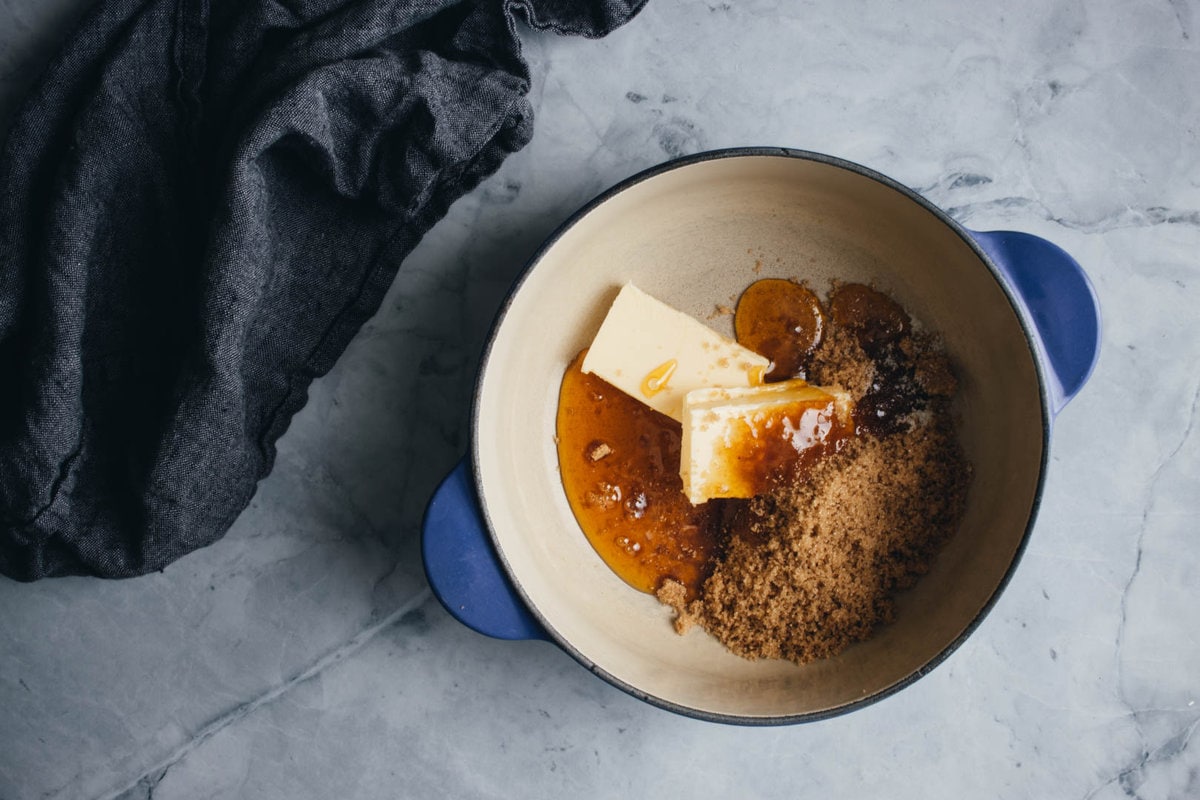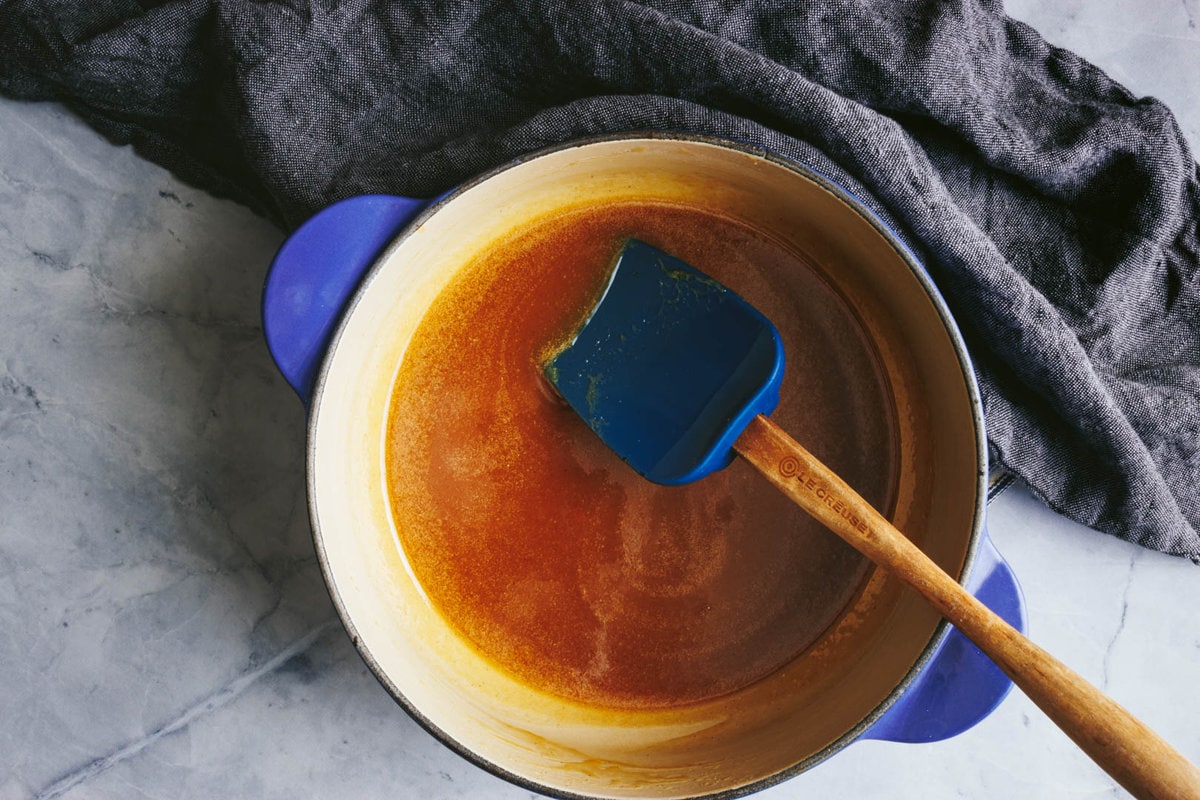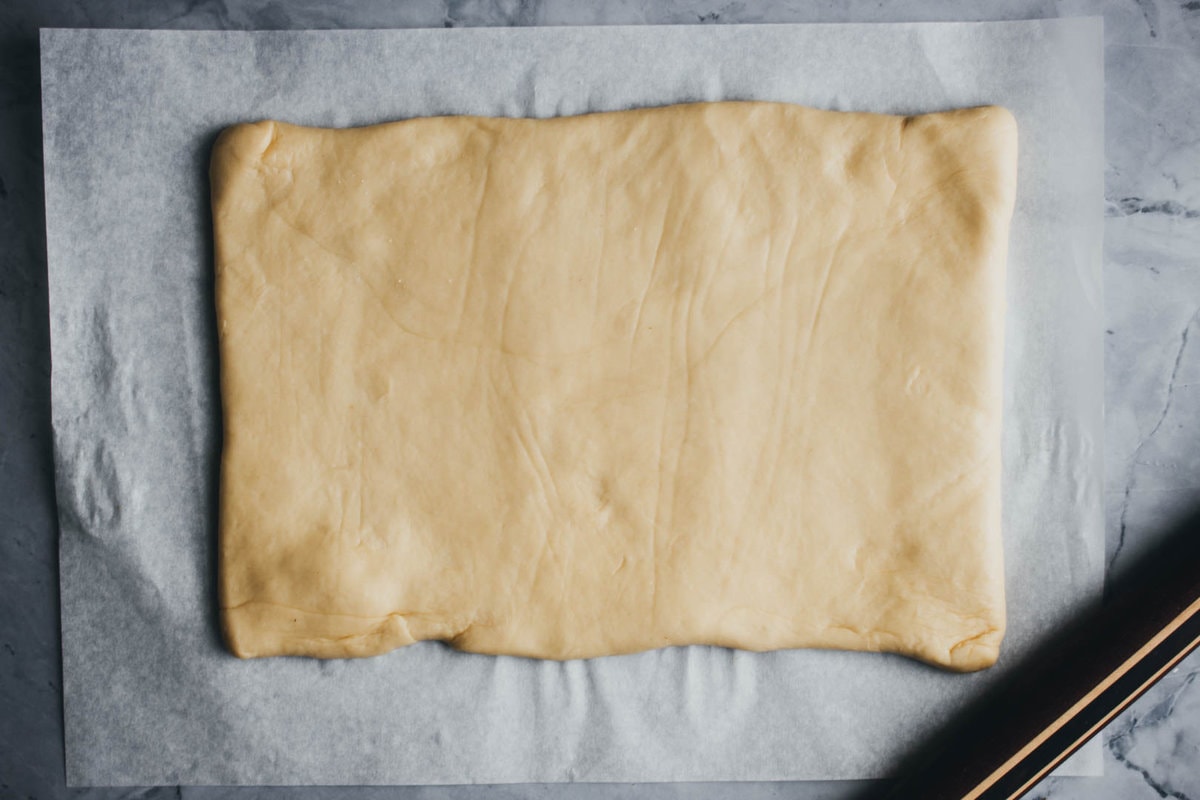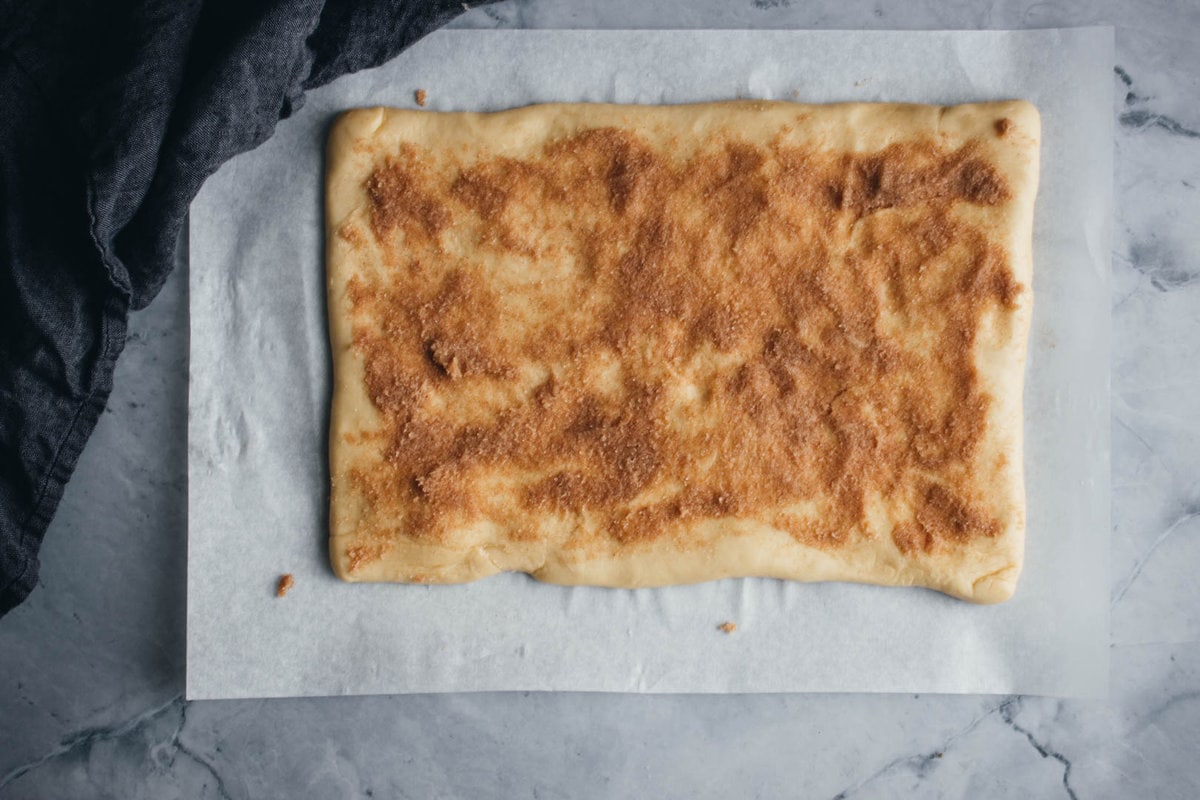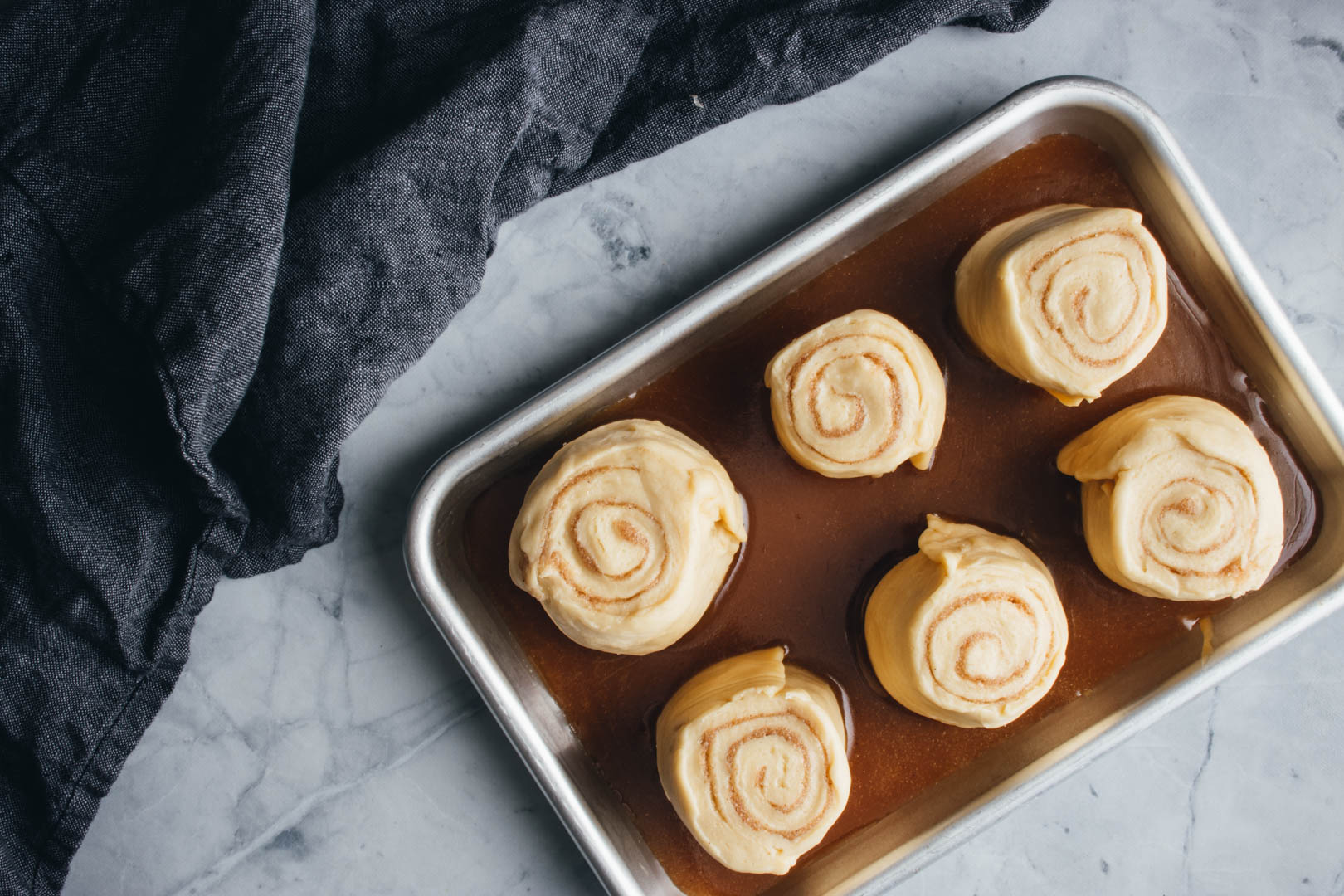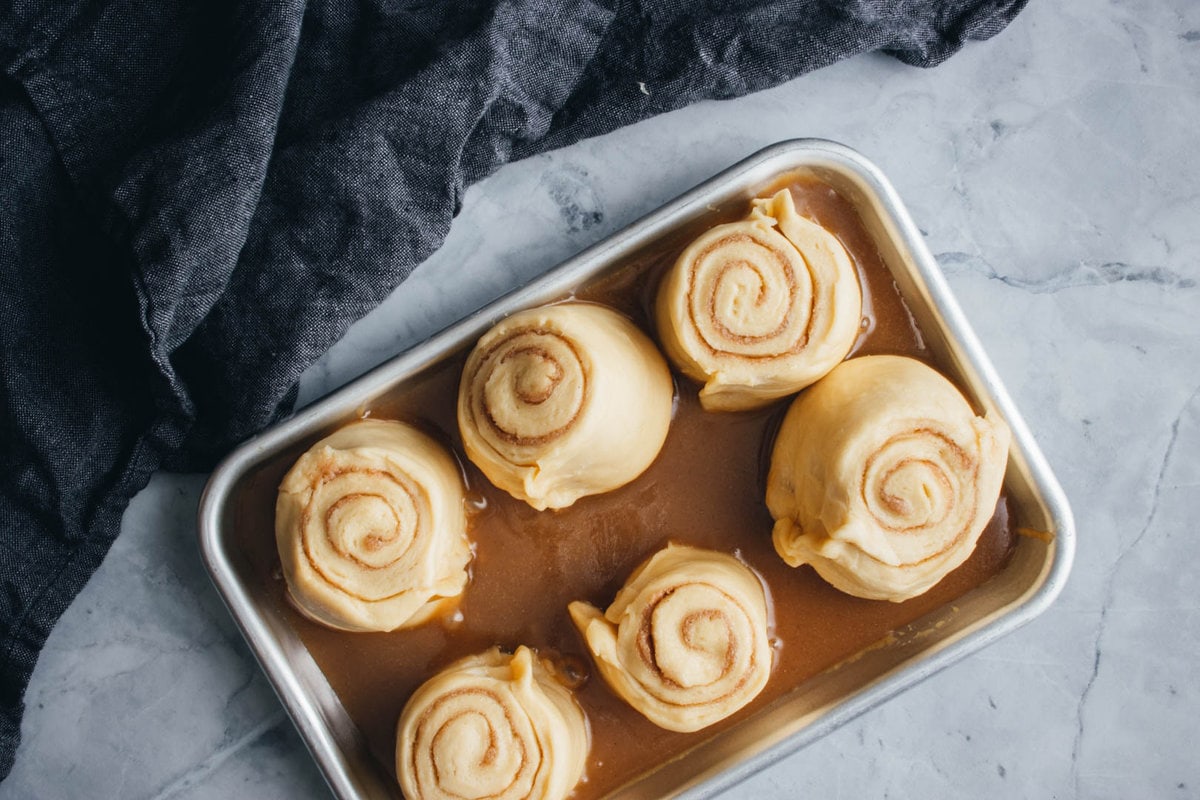Small Batch Sticky Buns
Perfectly sweet Small Batch Sticky Buns filled with cinnamon sugar and bathed in salted caramel. Makes 6 buns!
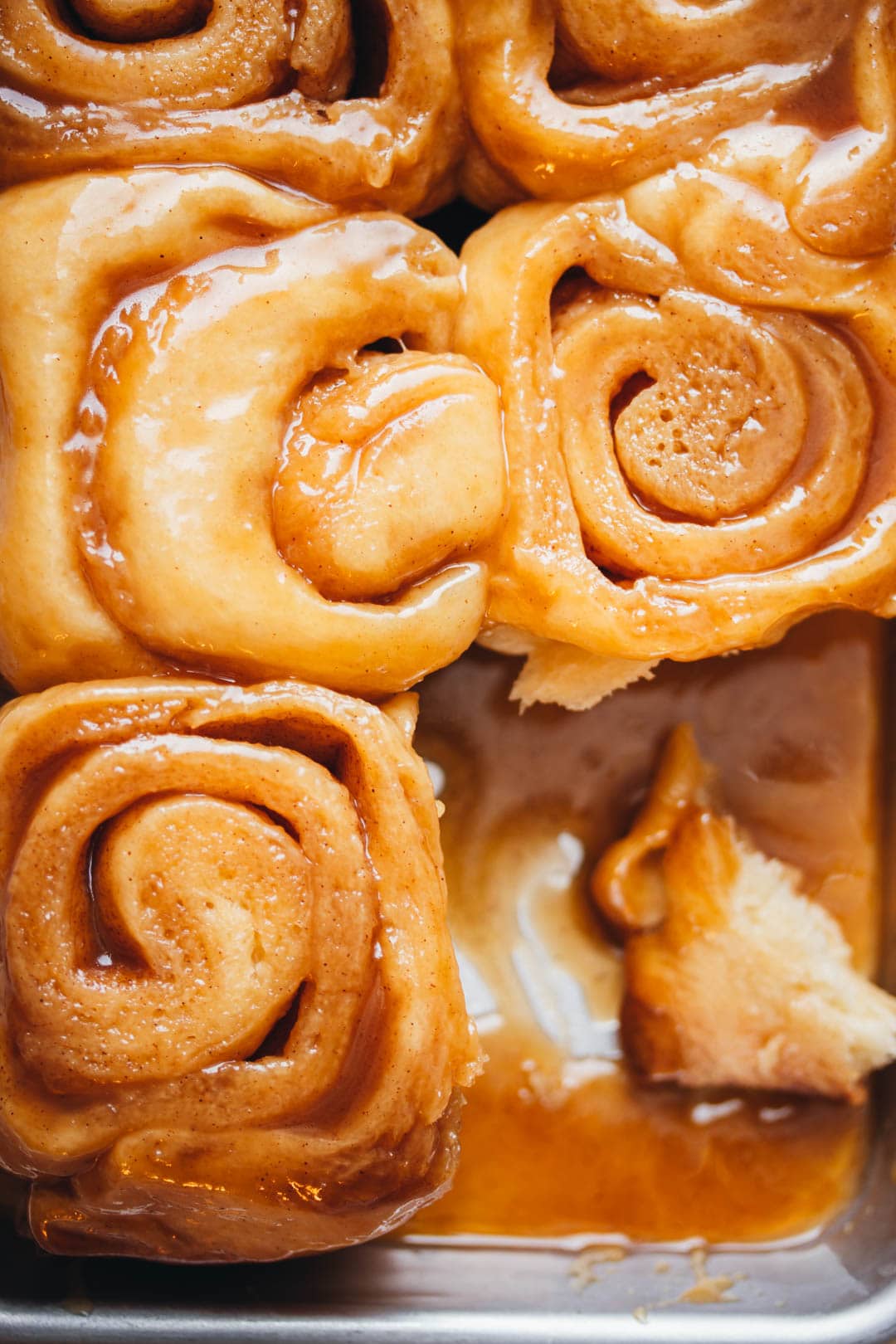
I never really understood why New Year’s Resolutions are set smack dab in the middle of winter, especially in the Midwest. This is when Midwesterners start to lose their cool with all the snow, ice, wind, and cold and realize it’s only February, and farmers haven’t even started their seeds yet.
Let’s not even mention the healthy diet and exercise plan that sounded like an excellent idea four weeks ago and has already begun to tank because who does this?
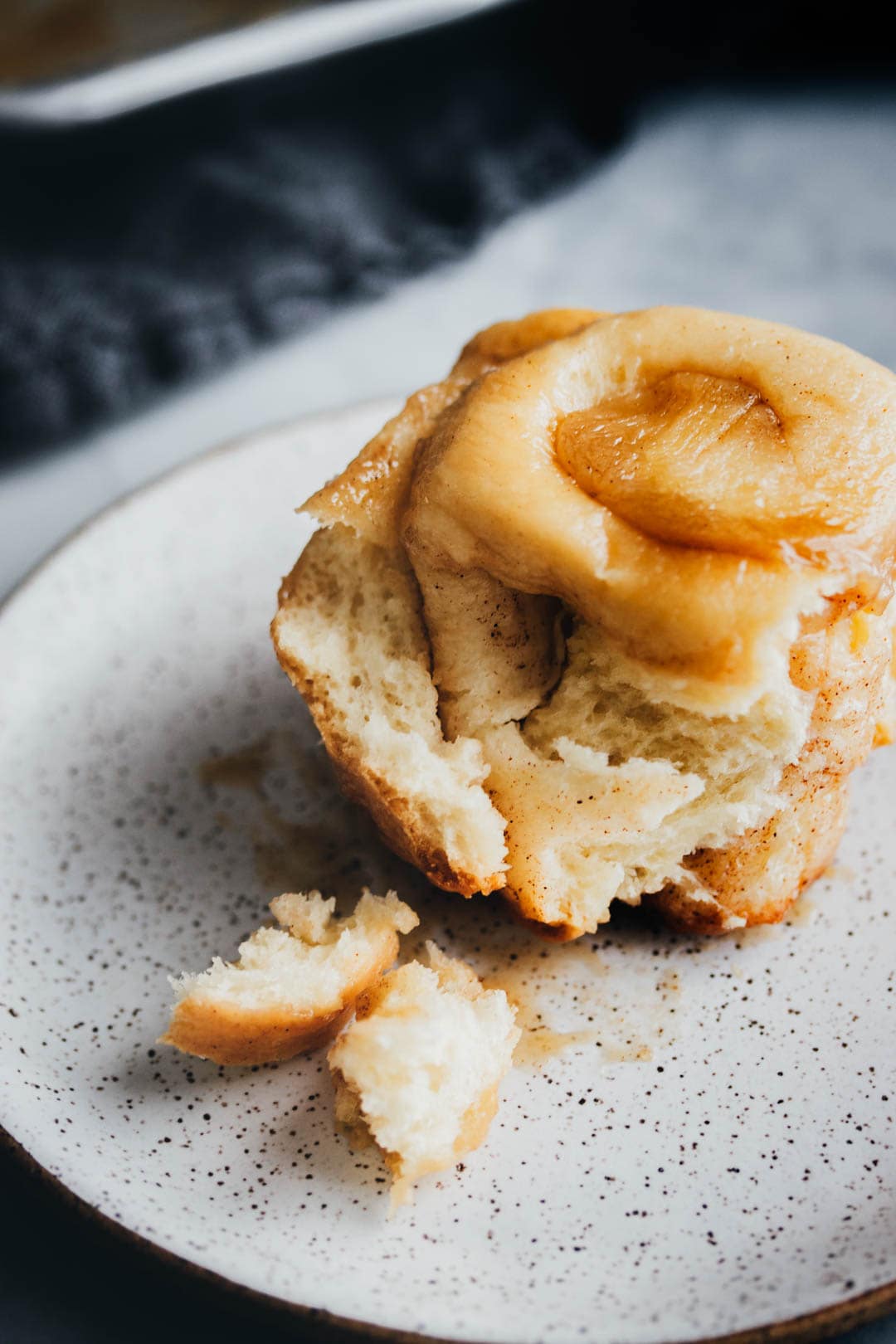
And unless you are a snowbird who strategically leaves the cold climate for warmer destinations this time of year or live on the other side of the world to escape this conundrum completely, having warm breakfast buns with a hot cup of coffee is exactly what we need right now.
I developed these Small Batch Cinnamon Sticky Buns on a whim one night when I was utterly exhausted from trying to make cinnamon rolls that weren’t too sweet and decided to opt for caramel-coated buns instead. While this may seem like an oxymoron, I assure you it’s not.
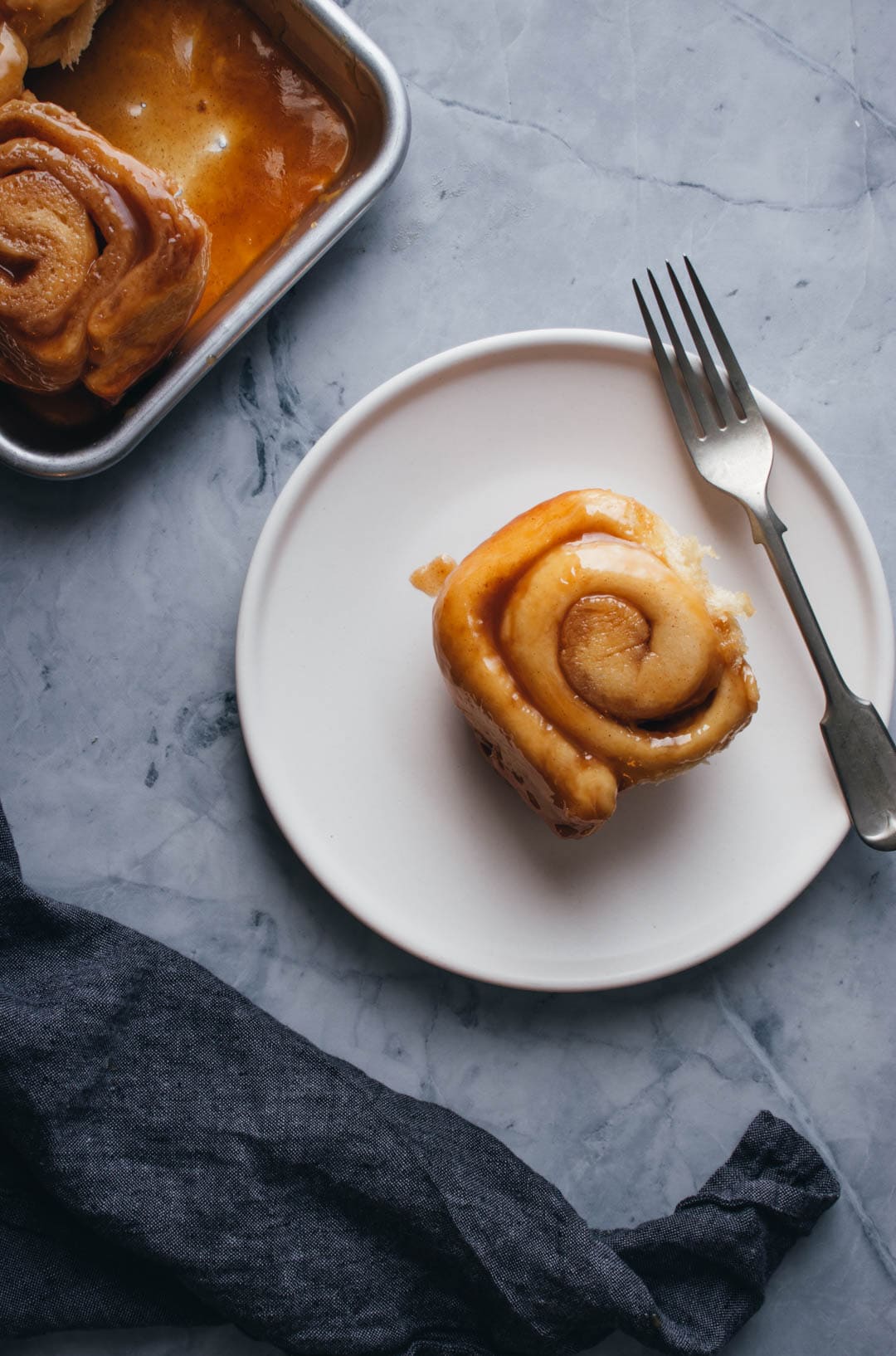
I dialed down the sugar and infused cinnamon in the caramel and the filling, making these buns more cinnamon than sweet. Then, I took the warm buns, tore them apart in true admiration, swirled pieces into the bottom of the pan for an extra swoop of salted caramel, and ate them with delight.
After much tearing, dipping, and eating, I knew had a serious problem and off-boarded the leftovers onto friends. I received texts throughout the night about these sticky buns, how old-school but not too sweet they are, and I immediately knew the recipe needed to land on this site.
Hoping, that there are ambitious souls out there who decide to make them instead of opting for the store-bought variety. Yes, I am talking to you.
In this Post: Everything you need to make Small Batch Cinnamon Sticky Buns
Step-by-Step: How to make these Small Batch Cinnamon Sticky Buns
- Whisk together the milk, egg, white sugar, and 1/2 cup flour.
- Add the proofed yeast.
- Add the remaining flour and mix the dough with a wooden spoon.
- Turn the dough onto a clean surface and gradually knead in the butter pieces until all butter pieces are incorporated.
- Continue kneading the dough until it passes the window pane test
- Shape the dough into a ball and place it in a lightly oiled bowl. Cover tightly with plastic wrap and refrigerate for at least 2 hours.
- While the dough is rising in the refrigerator, make the caramel. Add all caramel ingredients to a small saucepan
- Bring the mixture to a boil and simmer until the caramel mixture is slightly thickened.
- Once the dough has completed it’s first rise, remove from the refrigerator.
- Roll the dough into a 8″x12″ rectangle.
- Evenly spread the cinnamon, sugar, and butter filling on top of the dough.
- Tightly roll up the dough and cut into 6 equal pieces.
- Evenly space the rolls in the prepared pan with the caramel.
- Cover the rolls loosely with plastic wrap and let rise in a warm place until doubled.
- Bake the rolls until golden brown
How to Substitute Instant Yeast for Active Yeast
This recipe uses active dry yeast that is activated in warm milk before being added to the dough mixture. If using instant yeast, there is no need to activate the yeast in warm milk. Simply add all the milk and instant yeast directly to the bowl in step 2 instead of activating it in step 1.
How to know when to stop kneading the dough
The “window pane test” is the simplest and most fool-proof way I found to test if the dough has formed enough gluten. To do this, rip off a small piece of dough and flatten it between your fingers. Gently pull on opposite ends of the flattened dough piece to stretch out the center. As you pull, the dough in the center becomes thinner and thinner until it eventually tears.
The dough has formed enough gluten when the center of the dough becomes translucent and stretches 1-inch in diameter without ripping. If the dough rips and will not stretch out, knead the dough for an additional two minutes and test again. Repeat this process until your dough passes this test!

Refrigerate the Dough First
I’m all about making yeast dough easier to work with, and refrigerating the dough for the first rise and rolling out the the chilled dough is the BEST way to make these Cinnamon sticky buns (or any rolls for that matter).
CHILLED DOUGH IS EASIER TO WORK WITH. I first made these buns with room-temperature dough, and found that rolling warm dough that is filled with warm butter results in slippery, butter-coated hands and loosely rolled rolls that unravel in the oven. Chilled dough doesn’t snap back or stick to your hands or rolling pin, and it is easier to cut.
THE FIRST RISE IN THE REFRIGERATOR GIVES YOU MORE FLEXIBILITY. The dough can stay in your refrigerator for up to 3 days before continuing on with the recipe.
The Best Way to Roll and Cut Sticky Buns
I recommend using a ruler when rolling out the dough and cutting the rolls. While this is an extra step, uneven size sticky buns bake at different rates and it is easy to overestimate how big to roll out the dough (this is a small batch recipe after all).
While some people swear using unflavored dental floss is the best way to cut sticky buns, I don’t often have unflavored dental floss on hand, so I use a serrated knife that works great as well.
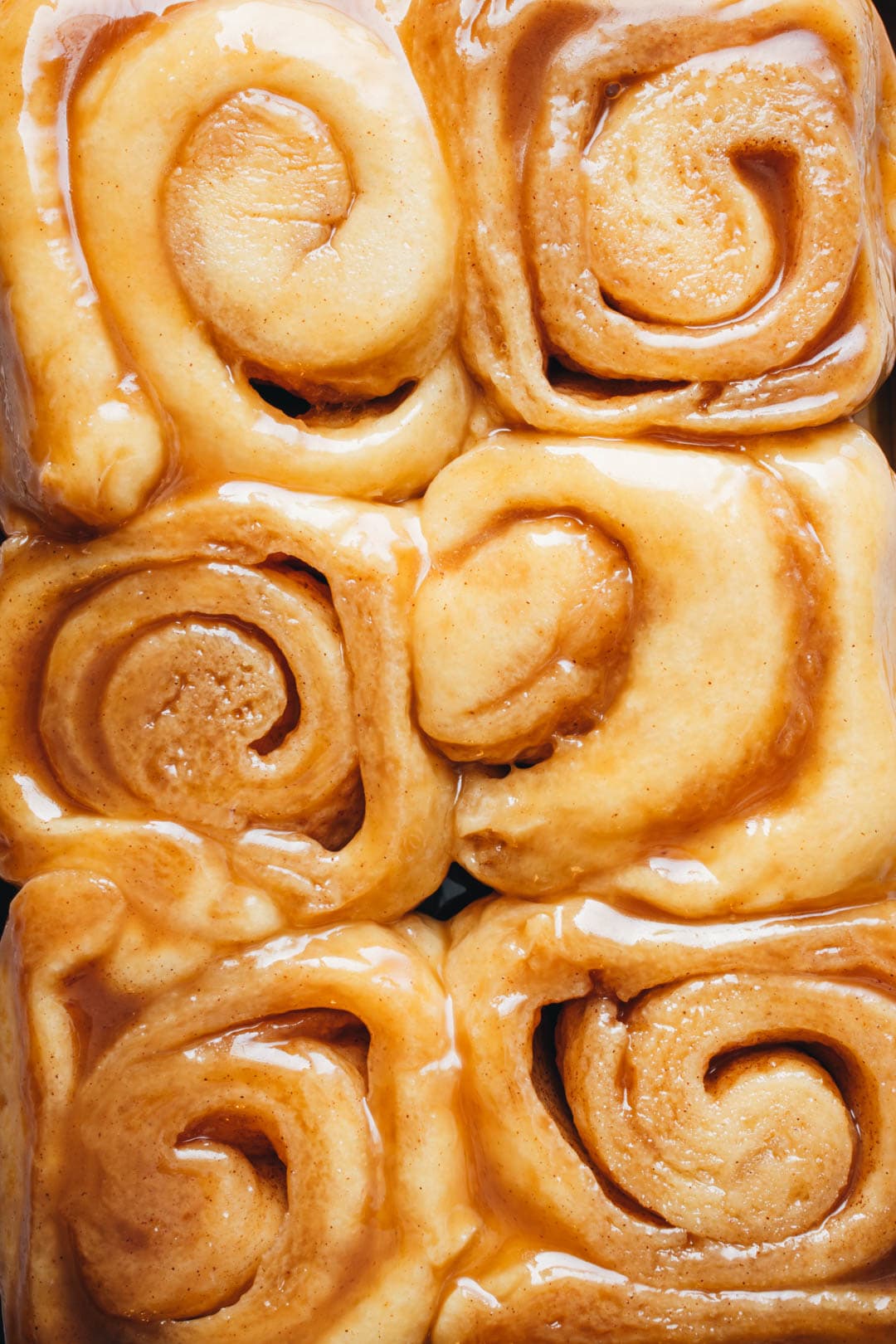
How to Have These Buns Ready for Breakfast
1-2 DAYS BEFORE SERVING: Make the dough and place it in the refrigerator to rise overnight. Prepare the caramel and store in the refrigerator in an air-tight container.
MORNING OF SERVING. You need approximately 90 minutes before the buns are hot out of the oven and ready to eat. Take the caramel and dough out of the refrigerator. Spread the caramel across the bottom of the pan you are using for baking the buns. Roll, fill, and shape the dough as directed. Arrange the buns in the pan filled with caramel and let the buns rise until double their size in a warm place, about 45 minutes. Bake the buns until lightly browned on the top and no longer look dough, about 25 minutes.
Small Batch Cinnamon Sticky Buns: Frequently Asked Questions
I use an 1/8″ sheet pan here, though a 9″ cake pan also works great. Remember, the caramel sits on the bottom of the pan as the buns bake so make sure the pan isn’t too large.
I use bread flour and this choice is up to you! For a chewier texture, use bread flour, and for a fluffier texture, use all-purpose flour.
The dough can stay in the refrigerator for up to 3 days,
I don’t recommend this. I’ve found refrigerating the stuffed rolls for the second rise and then letting the dough (and pan!) come to room temperature before baking doesn’t work well. The cold pan and dough can take hours to come to room temperature.
Yes! The dough needs to rise in the refrigerator for at least two hours before rolling out.
Store at room temperature in an air-tight container or tightly wrap each roll in plastic wrap. To eat, warm the rolls in a 350°F oven for 10 minutes or heat the rolls in the microwave for 30 seconds.
More Small Batch Baked Goods to Try
- Carrot Muffins with Whole Wheat Flour
- Small Batch Buttermilk Biscuits
- One Bowl Maple Cinnamon Banana Bread
Small Batch Cinnamon Sticky Buns
Perfectly sweet Small Batch Sticky Buns filled with cinnamon sugar and bathed in salted caramel. Makes 6 buns!
- Prep Time: 45 minutes
- Refrigerate Time: 2 hours
- Cook Time: 25 minutes
- Total Time: 3 hours, 15 minutes
- Yield: 6 buns 1x
- Category: Breakfast
- Method: Bake
- Cuisine: American
Ingredients
For the buns:
- 1 1/8 teaspoons active dry yeast
- 1/2 cup plus 2 tablespoons milk, divided*
- 1 tablespoon white granulated sugar, plus additional for activating the yeast
- 1 large egg
- 1/2 teaspoon kosher salt
- 2 1/4 cups plus 3/4 teaspoon (298g) white bread flour or all-purpose flour*
- 6 tablespoons (84g) unsalted butter, diced, at room temperature
For the caramel:
- 4 tablespoons (57g) unsalted butter
- 1/3 cup (67g) brown sugar
- 1/3 cup (70g) honey or Lyle’s golden syrup*
- 1/4 cup (58ml) heavy cream
- 1/4 plus 1/8 teaspoon ground cinnamon
- 1/8 teaspoon kosher salt
For the Filling
- 1/4 cup (50g) white granulated sugar
- 2 tablespoons unsalted butter, softened
- 1/2 teaspoon ground cinnamon
Instructions
- Proof the yeast. In a small microwave-safe cup or bowl, warm 2 tablespoons milk in a microwave until it reaches 105 to 110 degrees Fahrenheit, about 15 seconds. The milk should be warm to the touch. Sprinkle a pinch of sugar into the warm milk and add the yeast. Gently stir and set aside until it looks foamy, 3-5 minutes. If the yeast doesn’t look foamy, start over with new milk and yeast.
- Prepare the dough. In the bowl of an electric mixer or a large bowl if kneading by hand, whisk together the remaining milk, egg, white sugar, and 1/2 cup (65g) flour. Add the proofed yeast mixture, remaining flour, and salt and mix with a wooden spoon until a shaggy dough forms.
- Incorporate the butter. If using an electric mixer, attach the bowl to the mixer along with the dough hook. Mix on medium speed and gradually add in the butter pieces until no visible butter pieces appear, about 4 minutes. If kneading by hand, turn the rough dough onto a work surface (do not add any more flour). With the assistance of a bench scraper, slowly incorporate the butter pieces into the dough by squeezing the dough and stretching the corners of the dough to the center and then turning the dough and squeezing and stretching again until all the butter pieces are incorporated. This is messy, but just stick with it and the dough will come together.
- Knead the dough. Once the butter pieces are incorporated, continue kneading the dough until it is smooth and you can stretch a piece of dough out between your fingers without breaking (see the window pane test notes above), about 8-10 minutes. If the dough still clings to the side of the bowl or work surface after 2 minutes of kneading, add additional flour, 1 tablespoon at a time, until the dough no longer clings to the work surface or sides of the bowl.
- Refrigerate the dough. Shape the dough into a ball and then transfer it to a lightly oiled bowl. Cover the bowl tightly with plastic wrap. Let the dough rise in a warm place for 20 minutes before transferring it to the refrigerator to rise for at least two hours, and up to 3 days.
- Make the caramel. About 30 minutes before removing the dough from the refrigerator, melt the butter in a heavy saucepan over medium heat. Add the sugar, honey, heavy cream, cinnamon, and salt. Bring the mixture to a boil and reduce the heat to medium-low and stir until the caramel has slightly thickened, about 5 minutes. The caramel will thicken once it cools in the pan with the rolls, so we don’t want it too thick. Pour the caramel into the bottom of 1/8th sheet pan or 9″ cake pan to cool.
- Prepare the filling. In a small bowl, mash together the butter, sugar, cinnamon, and salt until it forms a buttery paste. I find a dinner fork works best for this.
- Roll the dough. When the dough has completed its first rise, remove the dough from the refrigerator. Place the cold dough on a piece of parchment paper and lay another piece of parchment paper on top of the dough. This prevents the dough from sticking to the rolling pin without the need for additional flour. Roll the dough into a 8″ x 12″ rectangle, with the long side closest to you. The size of the rectangle is important, so I recommend using a ruler.
- Roll the buns. Spread the spiced butter mixture evenly over the dough. Roll up the dough from the long end (the long end should be horizontal to you), into a tight log.
- Finish the roll. Once the dough is tightly rolled into a spiral, moisten your fingertips with a little bit of water and pinch the edge of the dough between your fingertips, repeat small pinches down the entire length of the roll. Pinching seals the roll and prevents the rolls from unfurling. Turn the roll seam-side down.
- Cut the rolls. Using a serrated knife, bench scraper, or unflavored floss, cut the log into 6 equal pieces. To ensure the rolls are evenly cut, it is often easier to cut the rolled dough in half first, and then cut each half into thirds.
- Second Rise. Place the rolls evenly spaced in the pan filled with caramel. Turn the rolls so the seams face each other. Cover loosely with plastic wrap and let the rolls rise in a warm place until doubled, about 45 minutes.
- Preheat. While the rolls are rising, position the oven rack to the center of the oven and preheat the oven to 350F (180C).
- Bake. Once the rolls have doubled in size, bake the rolls until they are golden brown and no longer doughy, about 25 minutes. Let the rolls cool in the pan for 5 minutes before flipping.
- Flip the rolls and serve. Place a sheet pan over the pan with the baked rolls and in one swift motion flip the pans over. Be careful since the pan with the rolls is still hot and the caramel is still warm. The rolls will flip onto the pan and reveal the caramel bottom. Enjoy immediately!
Notes
FLOUR. If you opt to measure by volume instead of weight, whisk the flour first to aerate it, then spoon into a measuring cup, and then level it off with the back of a knife. Use bread flour for a chewier bun texture and all-purpose flour for a softer bun texture.
MILK. 2% milk, whole milk, and unsweetened oat milk all work great!
LYLE’S GOLDEN SYRUP. Lyle’s Golden Syrup is commonly found in the UK and adds a new dimension to the caramel if you can find it.
Keywords: Small Batch Sticky Buns, Cinnamon Sticky Buns
